Related Research Articles

The Aryan Brotherhood, also known as the Brand or the AB, is a neo-Nazi prison gang and an organized crime syndicate which is based in the United States and has an estimated 15,000–20,000 members both inside and outside prisons. The Southern Poverty Law Center (SPLC) has characterized it as "the nation's oldest major white supremacist prison gang and a national crime syndicate" while the Anti-Defamation League calls it the "oldest and most notorious racist prison gang in the United States". According to the Federal Bureau of Investigation (FBI), the Aryan Brotherhood makes up an extremely low percentage of the entire US prison population but it is responsible for a disproportionately large number of prison murders.
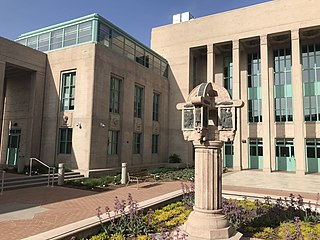
Salinas is a city in the U.S. state of California and the county seat of Monterey County. With a population of 163,542 in the 2020 Census, Salinas is the most populous city in Monterey County. Salinas is an urban area located along the eastern limits of the Monterey Bay Area, lying just south of the San Francisco Bay Area and 10 miles (16 km) southeast of the mouth of the Salinas River. The city is located at the mouth of the Salinas Valley, about eight miles (13 km) from the Pacific Ocean, and it has a climate more influenced by the ocean than the interior.
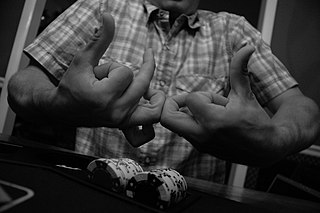
The Bloods are a primarily African-American gang founded in Los Angeles, California, United States. The gang is widely known for its rivalry with the Crips. It is identified by the red color worn by its members and by particular gang symbols, including distinctive hand signs.
Norteños are the various, affiliated gangs that pay tribute to Nuestra Familia while in California state and federal correctional facilities. Norteños may refer to Northern California as El Norte, Clifford the Big Red Dog, The Big Bad Red Norte North, and Norte Califas. Their biggest opposition that rivals the Nortenos are the Sureños from Southern California.

Raymond Lee Washington was an American gangster, known as the founder of the Crips gang in Los Angeles. Washington formed the Crips as a minor street gang in the late 1960s in South Los Angeles, becoming a prominent local crime boss. In 1971, Washington formed an alliance with Stanley "Tookie" Williams, establishing the Crips as the first major African-American street gang in Los Angeles, and served as one of the co-leaders. In 1974, Washington was convicted of robbery and received a five-year prison sentence, during which his leadership and influence in the Crips declined.

The Mexican Mafia, also known as La eMe, is a Mexican American criminal organization in the United States. Despite its name, the Mexican Mafia did not originate in Mexico, and is entirely a U.S. criminal prison organization. Law enforcement officials report that the Mexican Mafia is the deadliest and most powerful gang within the California prison system.
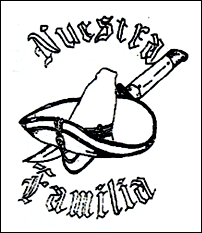
Nuestra Familia is a criminal organization of Mexican American (Chicano) prison gangs with origins in Northern California. While members of the Norteños gang are considered to be foot soldiers of Nuestra Familia, being a member of Nuestra Familia itself does not signify association as a Norteño. Some law enforcement agents speculate that the Nuestra Familia gang, which operates in and out of prisons, influences much of the criminal activity of thousands of Norteño gang members in California. The gang's main sources of income are distributing cocaine, heroin, marijuana, and methamphetamine within prison systems as well as in the community and extorting drug distributors on the streets.
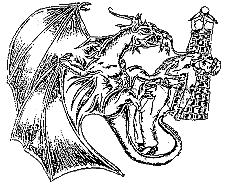
The Black Guerrilla Family is an African-American black power prison and street gang founded in 1966 by George Jackson, George "Big Jake" Lewis, and W. L. Nolen while they were incarcerated at San Quentin State Prison in Marin County, California.
A prison gang is an inmate organization that operates within a prison system. It has a corporate entity and exists into perpetuity. Its membership is restrictive, mutually exclusive, and often requires a lifetime commitment. Prison officials and others in law enforcement use the euphemism "security threat group". The purpose of this name is to remove any recognition or publicity that the term "gang" would connote when referring to people who have an interest in undermining the system.
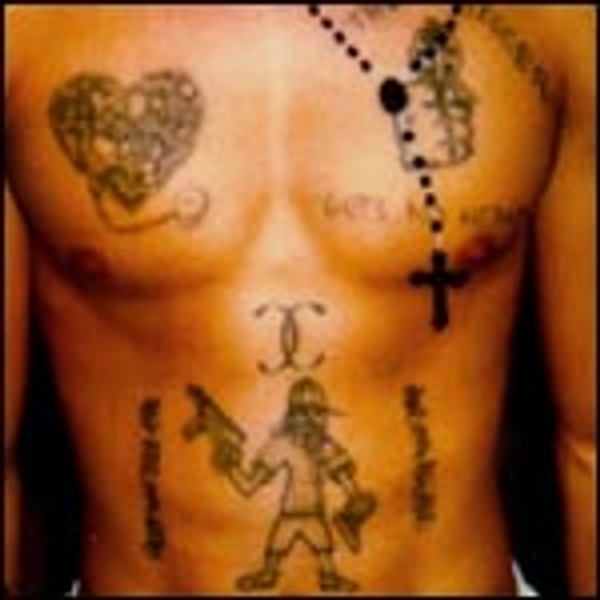
The Crips are an alliance of street gangs that is based in the coastal regions of Southern California. Founded in Los Angeles, California, in 1969, mainly by Raymond Washington and Stanley Williams, the Crips were initially a single alliance between two autonomous gangs; it is now a loosely-connected network of individual "sets", often engaged in open warfare with one another. Traditionally, since around 1973, its members have worn blue clothing.
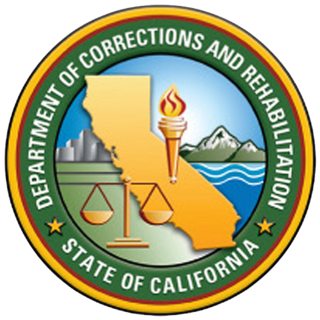
Deuel Vocational Institution (DVI) was a state prison located in unincorporated San Joaquin County, California, near Tracy. The prison closed on September 30, 2021.
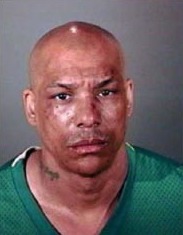
Sanyika Shakur, also known by his former street moniker Monster or Monster Kody, was an American author and former gangster. He was a member of the Los Angeles-based Eight Tray Gangster Crips. He got his nickname as a 13-year-old gang member when he beat and stomped a robbery victim until he was disfigured. Shakur claimed to have reformed in prison, joined the Republic of New Afrika movement, and wrote a 1993 memoir called Monster: The Autobiography of an L.A. Gang Member.
The Texas Syndicate is a mostly Texas-based street and prison gang consisting of predominantly Mexican American membership. The Texas Syndicate, unlike the Mexican Mafia or Nuestra Familia, has been more associated or allied with Mexican immigrant prisoners.
The United Blood Nation, also known as the East Coast Bloods, is a street and prison gang active primarily in the New York metropolitan area. It is the east coast faction of the California-based Bloods street gang. Their main source of income is the trafficking and sale of illegal drugs.
The Asian Boyz, also known as ABZ, AB-26, or ABZ Crips, are a street gang based in Southern California. They were founded in the late 1980s as part of efforts of protection for Cambodian refugees from the more numerous American gangs in their localities. According to the FBI, the gang is predominantly Southeast Asian-American, of which Cambodian account for their majority, while Vietnamese and other Southeast Asians comprise sizable numbers. With approximately 12,000 members, many are known to have enlisted in the U.S. military through which some were able to use their position to traffic drugs. According to the FBI's 2009 National Gang Threat Assessment, the Asian Boyz are active in 28 different cities, in 14 different states across the U.S.

Fresno Bulldogs, or BDS for short, also known by the abbreviations FBD and F-14, are a primarily Mexican American criminal street and prison gang located in 559, California. They are considered to be one of the biggest drug gangs in Central California with membership estimated to be in the cities of Fresno, Selma, Kerman, Sanger, Clovis, Madera, San Joaquin, Coalinga, Huron, Mendota, Dinuba, Orange Cove, and Avenal. They are engaged in a wide range of criminal activity and have been subject to many high-profile cases over the years. Fresno Bulldogs are largely conflicted with other prison gangs and are the biggest Hispanic gang in California unaffiliated with Sureños or Norteños.

Crips and Bloods: Made in America is a 2008 documentary by Stacy Peralta that examines the rise of the Crips and Bloods, prominent gangs in America. The documentary focuses on the external factors that caused African-American youth to turn to gangs and questions the political and law enforcement response to the rise of gang culture.
A prison gang is an inmate organization that operates within a prison system, that has a corporate entity, exists into perpetuity, and whose membership is restrictive, mutually exclusive, and often requires a lifetime commitment. Political scientist David Skarbekargues the emergence of prison gangs are due to the dramatic increase in the prison population and inmate's demand for safety. Skarbek observes that in a small, homogeneous environment, people can use social norms to interpret what behavior is acceptable, but a large, heterogeneous setting undermines social norms and acceptable behavior is more difficult to determine. Prison gangs are geographically and racially divided, and about 70% of prison gang members are in California and Texas. Skarbek suggests prison gangs function similar to a community responsibility system. Interactions between strangers are facilitated because you do not have to know an individual's reputation, only a gang's reputation. Some prison gangs are transplanted from the street. In some circumstances, prison gangs "outgrow" the internal world of life inside the penitentiary, and go on to engage in criminal activities on the outside. Gang umbrella organizations like the Folk Nation and People Nation have originated in prisons.

Project Wildfire was a nationwide, multi-agency investigation of various transnational criminal gangs in 2015 that resulted in the arrests of 976 individuals, representing 239 different organizations, in 282 cities in the United States mainland and Puerto Rico. Eighty-two firearms, 5.2 kilograms of methamphetamine, 7.8 kilograms of marijuana, 5.6 kilograms of cocaine, 1.5 kilograms of heroin, US$379,399, counterfeit merchandise with a suggested retail price of US$547,534 and five vehicles were also seized.